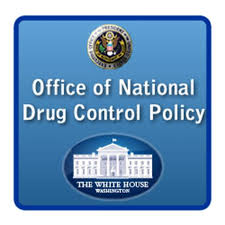There are honest disagreements about policy matters, and there is ignorance and fear-mongering.
That’s what’s happening in Pennsylvania’s House of Representatives, where a bill to mandate adoption of a formulary failed to pass yesterday. It appears some politicians are being swayed by mischaracterizations by those who should know better, including “several unions joining with…trial lawyers.”
What’s especially disturbing is these unions and “plaintiff advocates” are claiming to defend injured workers, yet their opposition to this bill risks patient safety and does nothing to improve patient care.
(Note: this is NOT a slam against all plaintiff attorneys or organized labor)
One plaintiff lawyer characterized the bill as “just a cost-savings package for insurance companies.” That claim is blatantly false. Wording in the bill, SB 936, “expressly requires regulators to make sure any savings form a formulary are passed on to policyholders via reduced rate filings” (quote from WorkCompCentral)
Opponents of the bill say they’d support a bill that only addressed opioids.
This is nonsensical and naive at best.
Why are a comprehensive formulary and UR necessary and appropriate?
Formularies have been in place in Medicare, Medicaid, Group and individual health insurance for decades. Workers’ comp PBMs use formularies and utilization review to ensure patients get the right drugs for their conditions, protect patients from potential ill effects from inappropriate medications, and streamline the approval process.
Second, it’s not just opioids that are potentially dangerous or deadly. Benzodiazepines, muscle relaxants, anti-depressants: all have significant risks, can be mis-used, and represent clear risks for patients.
Third, combining a formulary with utilization review is essential for patient safety. A formulary alone is just a set of guidelines; UR is how these guidelines are applied.
The compound drug scandal in Pennsylvania is prima facie evidence of the need for a strong formulary and tight utilization review. This from the Inquirer:
Three partners at [law firm Pond Lehocky] and its chief financial officer are majority owners of a mail-order pharmacy in the Philadelphia suburbs that has teamed up with a secretive network of doctors that prescribes unproven and exorbitantly priced pain creams to injured workers — some creams costing more than $4,000 per tube.
Pond Lehocky sends clients to preferred doctors and asks them to send those new patients to the law firm’s pharmacy, Workers First. The pharmacy then charges employers or their insurance companies for the workers’ pain medicine, sometimes at sky-high prices, records show. [emphasis added]
Formularies and UR are not the entire answer. In addition, Pennsylvania – and other states – should:
- adopt mandatory reporting to and checking of a drug monitoring program (PDMP),
- require a comprehensive approach to opioid prescribing (Washington State’s example is one of the better ones),
- vigorously enforce drug distribution reporting requirements, and
- demand manufacturers and distributors pay for the damage they have and continue to cause.
Note – as I’ve opined before, I have concerns with closed or binary formularies, and strongly believe payers and PBMs should have the flexibility to adapt formularies to match the needs, conditions, and co-morbidities of individual patients.
What does this mean?
We are doing everything we can to ensure patients get the drugs they need quickly, while protecting those patients from potentially dangerous medications.
It’s not about costs, it never was, and it never will be.




